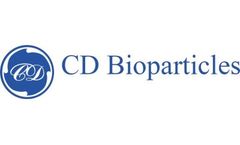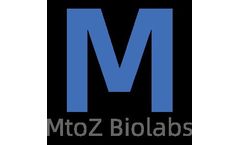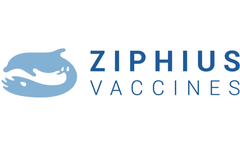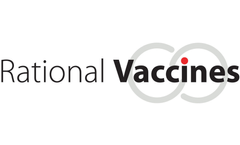Immune Mediated Articles & Analysis
20 articles found
Upon activation platelets discharge internal granules and extracellular vesicles (EVs) which play key roles in thrombosis and hemostasis besides immune regulation thus has a reliable basis for drug delivery systems. ...
At present, recombinant protein drugs are widely used in various fields such as tumors, autoimmune diseases, metabolic diseases, geriatric diseases, and degenerative diseases.FcyR (Fc gamma receptors) are receptors expressed on the surface of immune cells, primarily responsible for recognizing and binding to the Fc (Fragment crystallizable region) part of antibodies. ...
Th1 cells suppress B-cell function and mediate cellular immunity by secreting inflammatory cytokines such as interleukin (IL) and interferon (IFN), and enhance anti-infective immunity by phagocytes. Th2 cells mediate humoral immune responses by secreting cytokines such as IL-4 and IL6, which promote B-cell ...
They are effective in enhancing the immune response to pathogens. Their protection against pathogens is dependent on an antibody-mediated immune response. ...
Their primary roles include: Immune Regulation: Cytokines orchestrate the complex interplay of immune cells during infection, inflammation, and tissue repair. ...
IgG-like bispecific antibodies: IgG-like BsAb has an Fc part and has Fc-mediated effector functions, such as antibody-dependent cell-mediated cytotoxicity (ADCC), complement-dependent cytotoxicity (CDC) and antibody dependent cell-mediated phagocytosis (ADCP). ...
Biological Significance of Glycosylation Changes in the glycan composition and structure of Fc-Fusion can cause conformational changes in the structural domain of Fc, which can alter its binding affinity to the Fcγ receptor and consequently lead to functional changes in immune effectors. Fc-mediated antibody effector functions include complement-dependent ...
Relationship Between Immunity, Inflammation and Cancer Immunity is an act of self-protection of the body. ...
Mechanism of Vaccine Adjuvants Vaccine excipients, including adjuvants, are added to vaccine formulations to enhance the immune response by providing necessary signals to the immune system. Adjuvants can stimulate the innate immune system, improving the recognition of antigens and promoting a more robust adaptive immune response. ...
Applications of Click Chemistry 1. Sugar-mediated tumor immunity Bertozzi, who has long been interested in sugars coated on the surface of cells, used "click chemistry" to create antibody-enzyme conjugates that reshape sugar calyces, as well as Lysosome-targeting chimera (LYTAC) that degrade membrane-bound and extracellular targets. For example, human ...
In this case, using the bispecific antibody helped reduce unexpected toxicity in patients with low levels of HER2 expression. l Selection of antibody size/fragment Most anti-tumor ADCs are based on IgG1 antibodies, partly because these molecules can trigger Fc-mediated immune functions such as ADCC, CDC, and ADCP. However, most ADCs targeting solid tumors have ...
Here, using a genetic timestamping system in mice, we show that persistent PCs accrue in bone marrow at an approximately constant rate of one cell per hour over a period spanning several weeks after a single immunization with a model antigen. Affinity-based selection was evident in persisting PCs, reflecting a relative and dynamic rather than absolute affinity threshold as ...
It is also known as the major histocompatibility complex (MHC), and it is the most polymorphic region in the human genome, involving diverse immune reactions. HLA is divided into HLA-class I (corresponding to MHC class I) and HLA-class II (corresponding to MHC class II) according to the different types of T cells they interact with. ...
Self-amplifying RNA vaccines may induce equivalent or more potent immune responses at lower doses compared to non-repli- cating mRNA vaccines via amplified antigen expression. ...
Pro-inflammatory Cytokines Interleukin-1 (IL-1) IL-1 is a proinflammatory cytokine that activates a variety of immune and inflammatory cells and is secreted mainly by monocytes/macrophages, neutrophils and endothelial cells. ...
The interesting SARS-CoV-2 omicron mutant strain evades immunity mediated by antibodies from vaccination or infection with early mutants due to the accumulation of a large number of spike mutations. Recently, in a research report titled "Structural basis of SARS-CoV-2 Omicron immune evasion and receptor engagement" published in Science, ...
The cornea is essential for vision yet highly sensitive to immune-mediated damage following infection. Generating vaccines that provide sterile immunity against ocular surface pathogens without evoking vision loss is therefore clinically challenging. ...
These diseases affect different parts of the body, but they all have one thing in common — they’re marked by a malfunctioning immune system. Doctors call these illnesses immune-mediated diseases. ...
ByEnsia
Sine-like curves of T-cell activation were observed for both CD4- (T-helper mediated) and CD8- (cytotoxic) T-cell activation. However, the CD8 activation curve was shifted towards a higher damage ratio, determined by its higher peak value. Mechanical cell damage can generate a T-cell-mediated immune reaction. Therefore, quantities of activated ...
To address if the modulation of immunity balance by low dose radiation is involved in the enhancement of the anti-tumour function, we examined the effect of 0.5 Gy γ-irradiation on the Th1/Th2 immunity balance in Ehrlich Solid Tumour (EST)-bearing mice. ...













